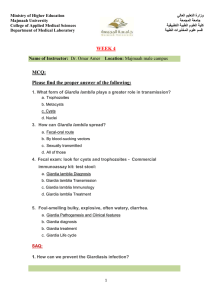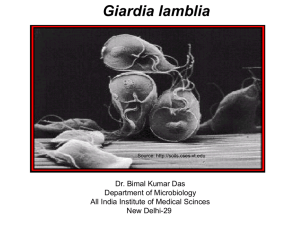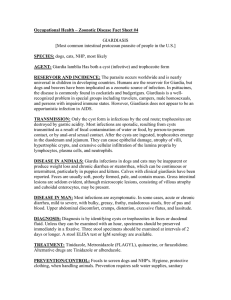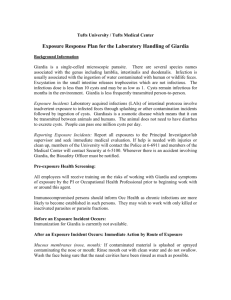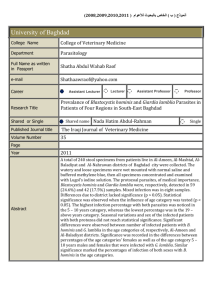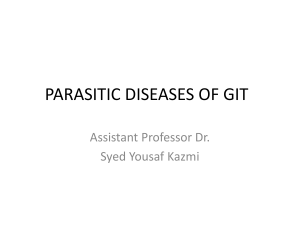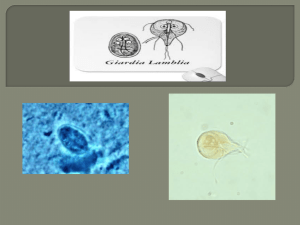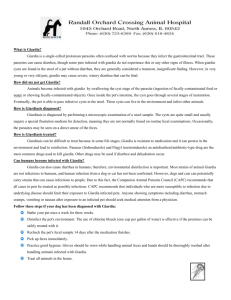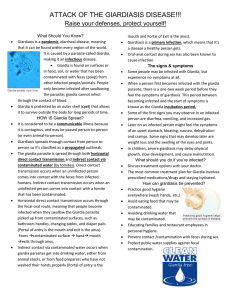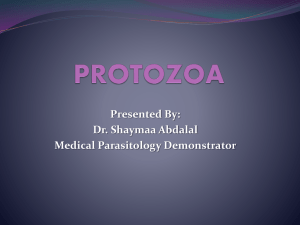A-Intestinal Protozoal Infections: OLOGY PARASIT
advertisement
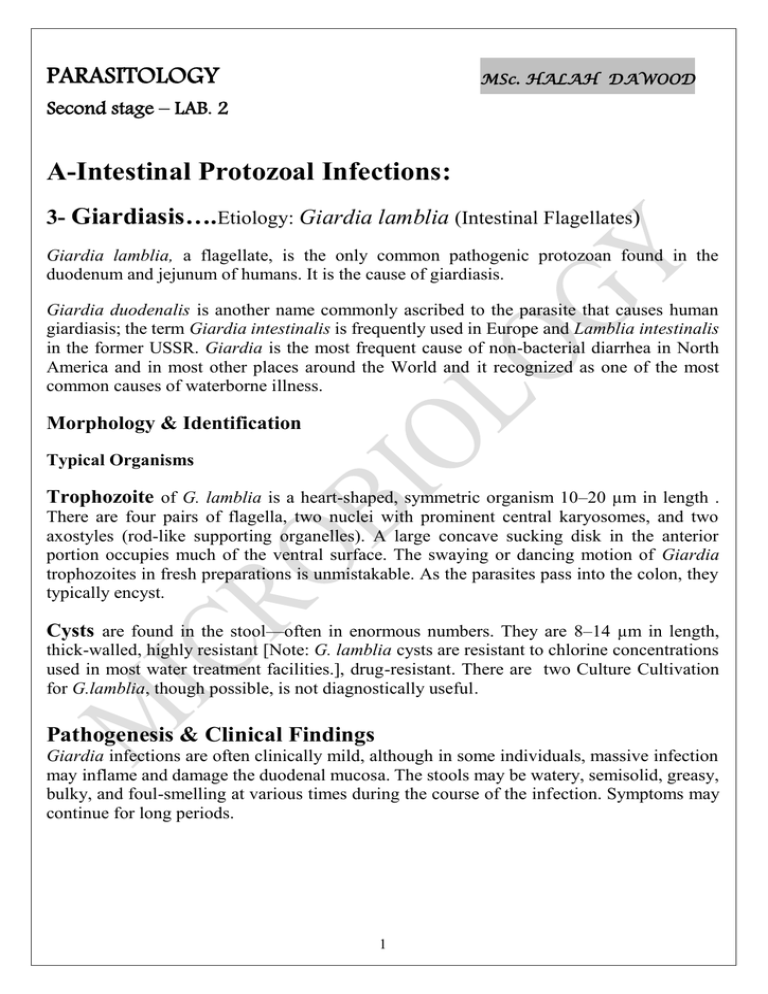
PARASITOLOGY MSc. HALAH DAWOOD Second stage – LAB. 2 A-Intestinal Protozoal Infections: 3- Giardiasis….Etiology: Giardia lamblia (Intestinal Flagellates) Giardia lamblia, a flagellate, is the only common pathogenic protozoan found in the duodenum and jejunum of humans. It is the cause of giardiasis. Giardia duodenalis is another name commonly ascribed to the parasite that causes human giardiasis; the term Giardia intestinalis is frequently used in Europe and Lamblia intestinalis in the former USSR. Giardia is the most frequent cause of non-bacterial diarrhea in North America and in most other places around the World and it recognized as one of the most common causes of waterborne illness. Morphology & Identification Typical Organisms Trophozoite of G. lamblia is a heart-shaped, symmetric organism 10–20 µm in length . There are four pairs of flagella, two nuclei with prominent central karyosomes, and two axostyles (rod-like supporting organelles). A large concave sucking disk in the anterior portion occupies much of the ventral surface. The swaying or dancing motion of Giardia trophozoites in fresh preparations is unmistakable. As the parasites pass into the colon, they typically encyst. Cysts are found in the stool—often in enormous numbers. They are 8–14 µm in length, thick-walled, highly resistant [Note: G. lamblia cysts are resistant to chlorine concentrations used in most water treatment facilities.], drug-resistant. There are two Culture Cultivation for G.lamblia, though possible, is not diagnostically useful. Pathogenesis & Clinical Findings Giardia infections are often clinically mild, although in some individuals, massive infection may inflame and damage the duodenal mucosa. The stools may be watery, semisolid, greasy, bulky, and foul-smelling at various times during the course of the infection. Symptoms may continue for long periods. 1

